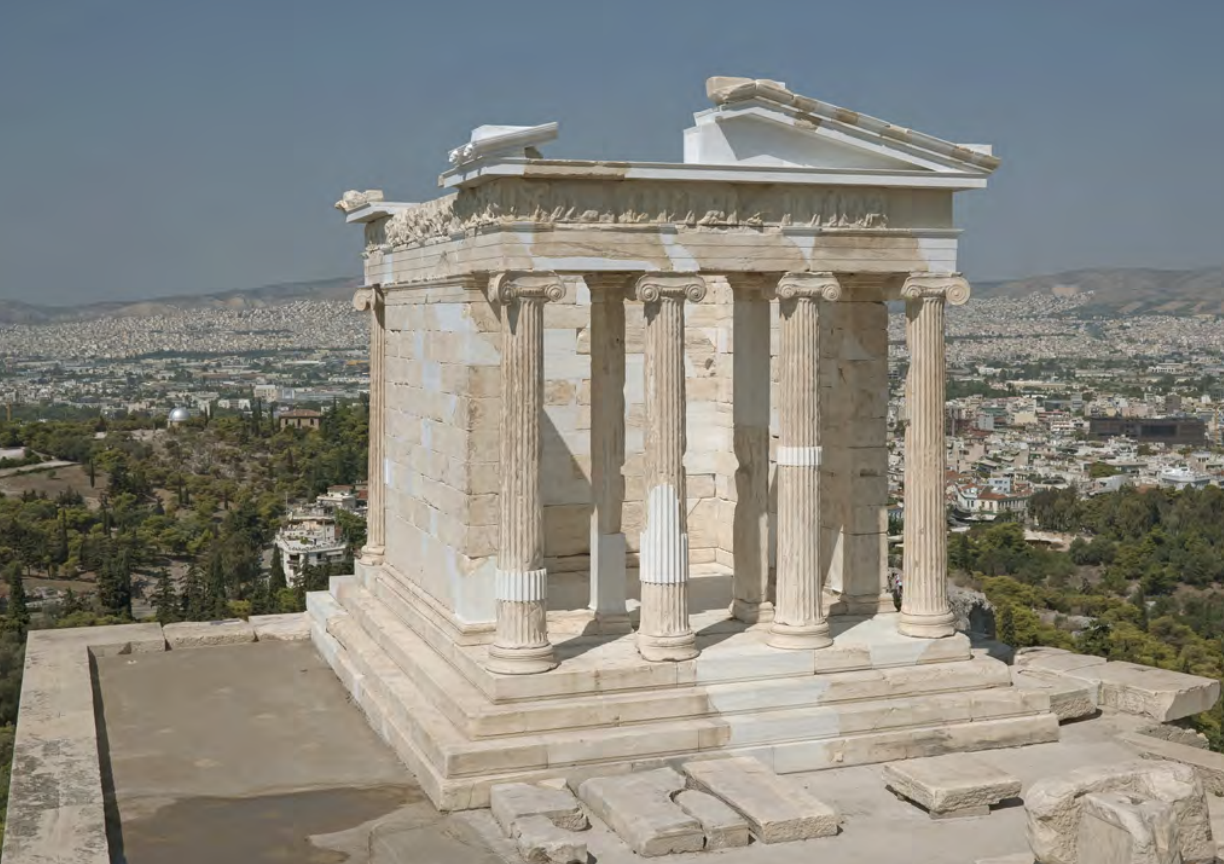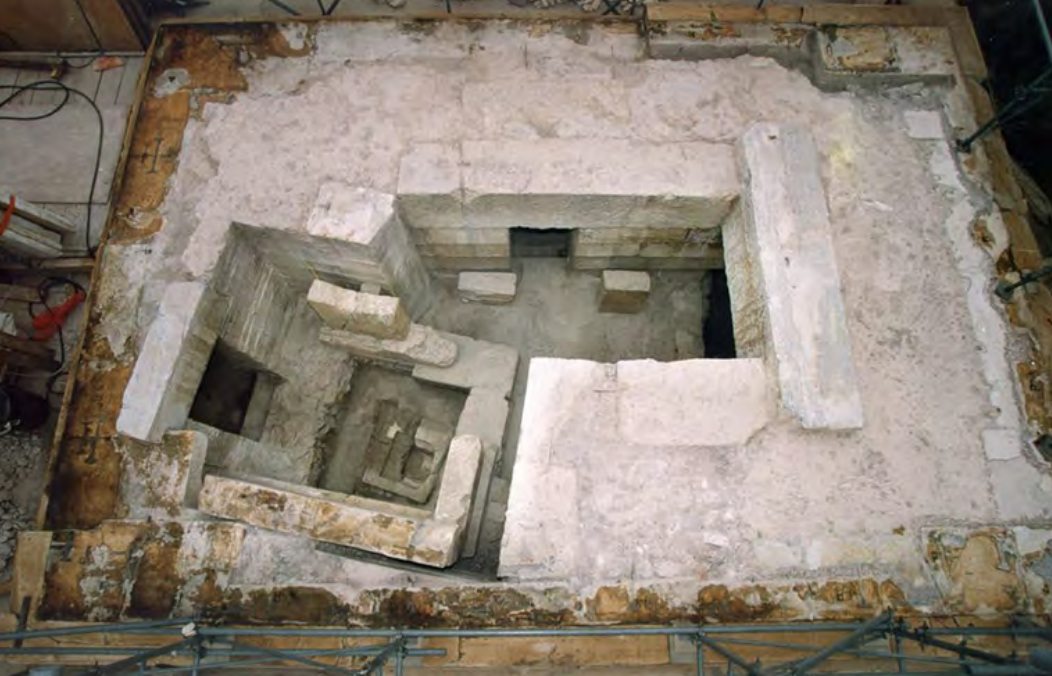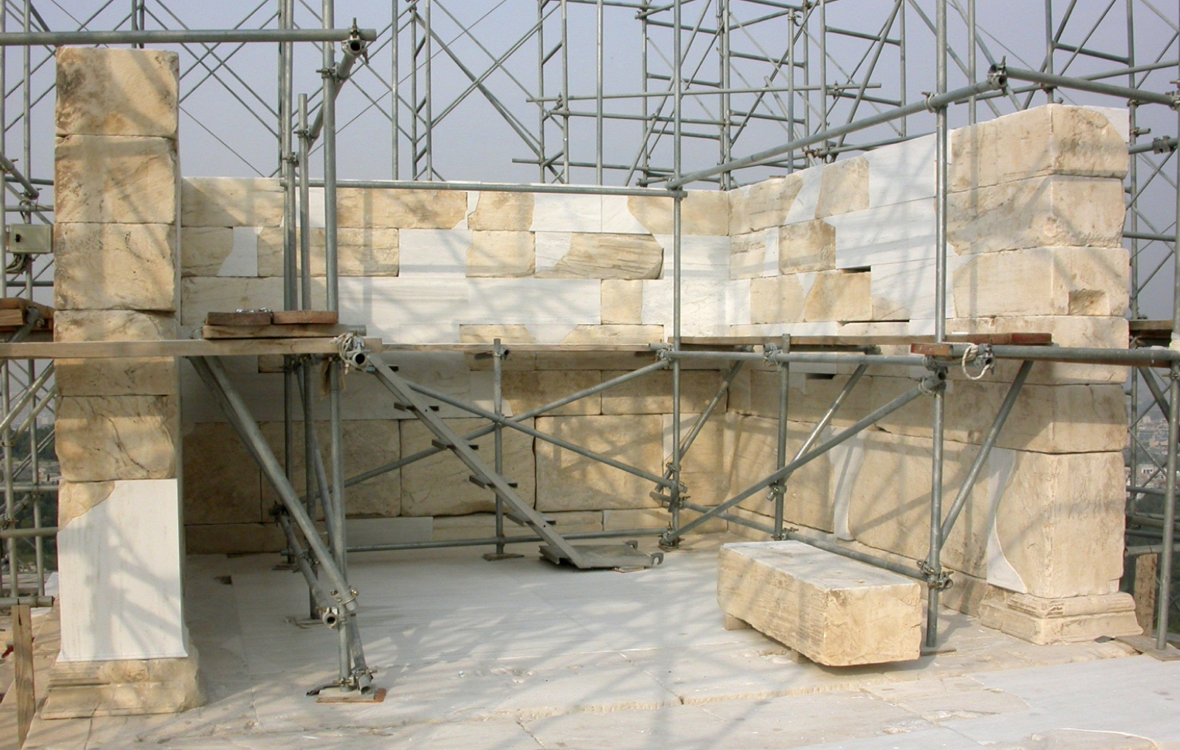
History
Built between 427 B.C. and 424 B.C., this ionic temple made entirely of Pentelic marble serves as a place of worship to Athena Nike, or Victorious Athena. The site upon which it lays was once under Mycenaen patrol, for a bastion had been built there and guarded the entrance to the Acropolis. It housed an earlier poros shrine, a wooden statue of Athena, and an archaic cult figure that was discovered in 1936. The temple’s most prominent features such as the two colonnades framing the cella on the east and west facades can be attributed to the architect Kallikrates. Friezes run along all the sides of the cella depicting mythology and warfare. In the 17th century, the temple was ransacked and its stones were used to strengthen the Turkish fortification wall as well as the entrance to the Acropolis. In doing so, the krepis and other architectural members of the temple were discovered, as well as the classical bastion it stands upon. Restoration efforts began shortly after this unearthing.
Reconstruction
Previous anastelosis efforts carried out by Ludwig Ross and Nikolaos Balanos focused on repairing structural problems in the foundations and superstructure. However, severe damage was still occurring throughout the monument, and so a third restoration attempt commenced in 2000. The new interventions consisted of dismantling, repositioning, and reinforcing the architectural members that were impaired or situated incorrectly. A hoist system was developed to safely move these fragments as well as the friezes and columns. Cement and other fillings were added to restore dimensions that had deteriorated in previous interventions and suffered from weather corrosion. One.problematic area included six slabs covering a surface of unreinforced concrete upon which the temple sat, giving way to a possible collapse. This was removed and replaced with stainless steel sheets placed on top of the foundation grid that prevents rainwater from seeping into the basement portion of the temple, which houses the original base of the monument along with the first shrines. Column drums, capitals, pediments, and coffers slabs also faced maintenance procedures that have resulted in their preservation in the Acropolis Museum and casting in the actual temple or successful refurbishments. The most important modern interventions on this monument was the relocating of the stone walls in their original positions, allowing stronger holds and an accurate portrayal of the ancient sanctuary of Athena Nike. Work was completed in 2010, but the committee is currently improving the accessibility of the underground crypt as well as to the temple itself to be made available to the public.





